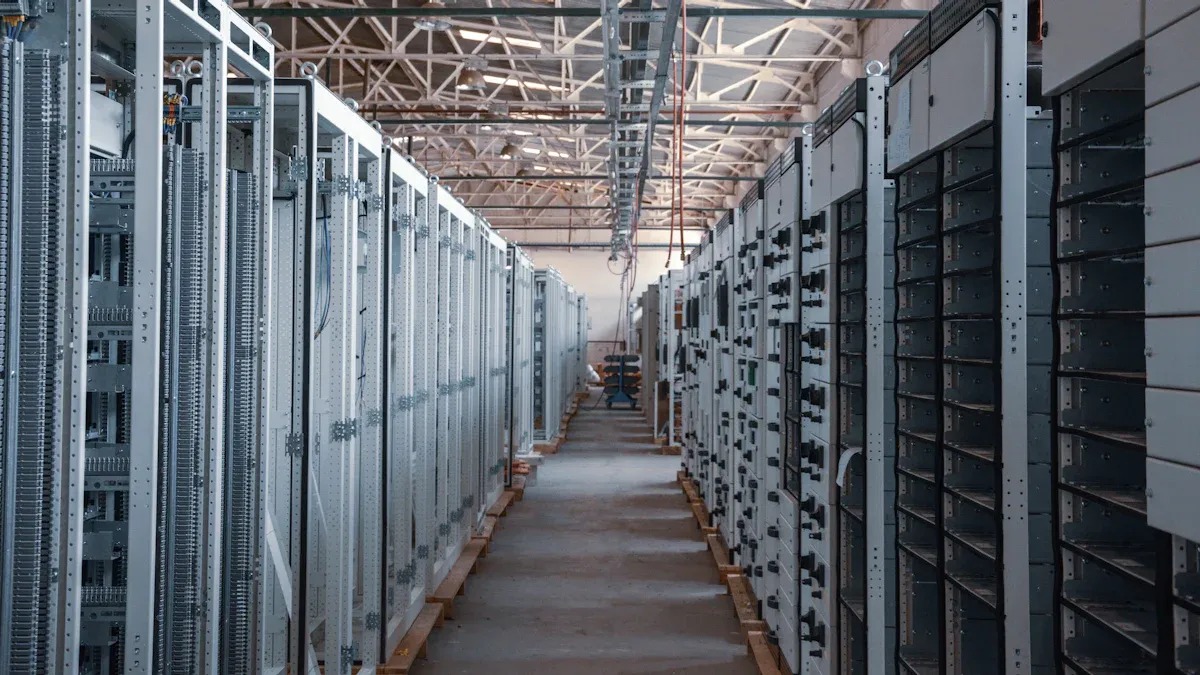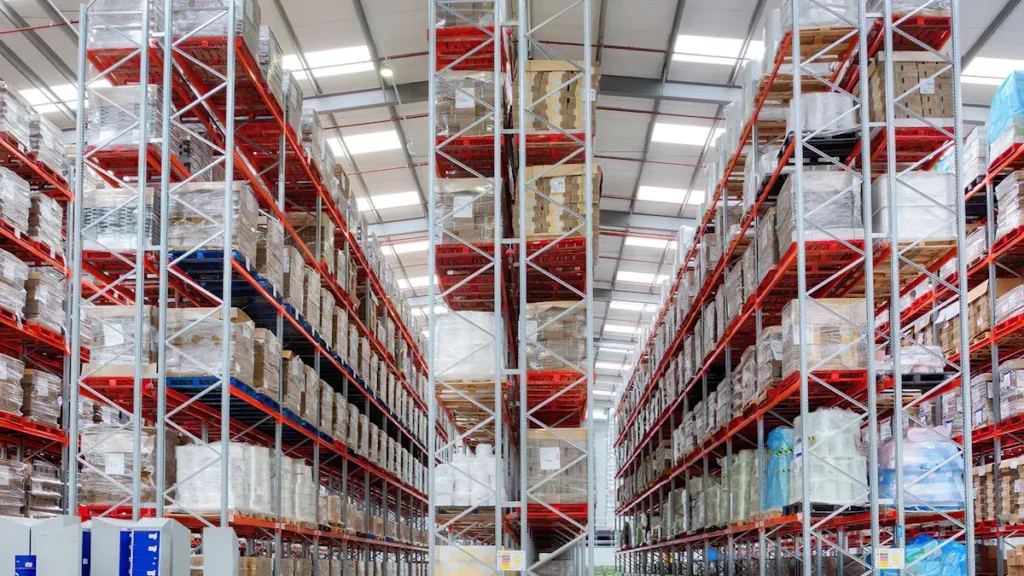© Copyright – 2010-2023 : All Rights Reserved. Sitemap
Power Distribution Unit PDU, rack mount PDU, PDU data center, Smart PDu, intelligent PDU
Power Distribution Unit PDU, rack mount PDU, PDU data center, Smart PDu, intelligent PDU
DTI-CX 2025 Digital Transformation Indonesia Conference, DATE:6-7 AUG.2025, Booth No.: C21

A Metered PDU Explained begins with understanding that a metered unit primarily monitors your power consumption and gives you clear usage data. In contrast, a Switched PDU provides remote on/off control for individual outlets. The choice in the switched PDU vs metered PDU debate depends on your priorities. You must select your power distribution unit carefully, since PDU issues contribute to 52% of data center outages. The market for intelligent PDU solutions—including both metered and switched models—is growing quickly. Your decision ultimately rests on whether you need the power visibility of a metered PDU or the remote control of a switched unit.it.
Metered power distribution units give you visibility into your rack’s energy consumption. Unlike basic power distribution units, these intelligent devices provide real-time monitoring of your equipment. This allows you to see exactly how much power your servers and network gear are drawing at any moment.
The main job of a metered PDU is to measure and report power consumption. These monitored power distribution units provide remote monitoring capabilities, sending data over your network. You can access this information through a web interface or specialized software. The accuracy of this data is critical. Modern metered PDUs offer a precision of +/- 1%, which provides “billing-grade” accuracy for tracking your true power usage. Less precise metered PDUs with +/- 5% accuracy are only suitable for basic checks, not for detailed efficiency planning.
Access to detailed power usage data helps you make smarter decisions. With real-time data, you can identify overloaded circuits before they trip and cause an outage. You can also spot “ghost servers” that consume power without doing any useful work. For example, Target saved 261,000 kWh annually at one data center by using monitored data to identify and power down two unloaded PDUs. This shows how metered PDUs can directly lead to significant cost savings. The real-time information from metered PDUs helps you optimize your entire power infrastructure.
You should choose a metered PDU when your primary goal is to understand and manage your power consumption without needing to turn outlets on or off remotely. A metered PDU is the most cost-effective choice in these situations.
Tip: A metered PDU is the right tool if you need to:
If monitoring is your only requirement, the higher cost of a switched PDU is not necessary. The metered model provides all the power usage insights you need at a lower initial investment.
A switched PDU gives you complete command over your rack equipment from anywhere. Unlike metered-only models, these power distribution units let you remotely turn individual outlets on, off, or reboot them. This capability transforms how you manage your IT infrastructure, especially for equipment that is difficult to access.
The primary function of a switched PDU is outlet-level control. You can access the unit over a network to manage power to each connected device. For remote control, you can use protocols like SNMP, which has lower overhead for automated tasks. You typically manage switched PDUs through several common methods:
This remote access allows you to power cycle a frozen server or provision power for new equipment without ever stepping foot in the data center.
The main benefit of switched PDUs is a dramatic reduction in downtime. Remote management can decrease the time needed to fix a problem by up to 66%. Instead of waiting hours for a technician to arrive on-site for a simple reboot, you can restore service in minutes. Another key benefit comes from advanced control features like power sequencing. Switched PDUs prevent inrush current overload by staggering the power-up process for your devices. This intelligent startup protects your equipment and prevents tripped breakers.
| Feature | Description |
|---|---|
| Power Sequencing | Yes, delay control for device startups |
| Yes, sequencing delays minimize inrush current |
These benefits make switched PDUs a powerful tool for improving operational efficiency and system reliability.
You should choose a switched PDU when remote control is your top priority. If you manage equipment in unmanned locations, such as edge data centers or remote offices, switched power distribution units are essential. They are also ideal for mission-critical applications where minimizing downtime is paramount.
Choose a switched PDU if you need to:
- Remotely reboot unresponsive servers and network gear.
- Secure your rack by disabling unused outlets.
- Control equipment in locations that are difficult or expensive to access.
- Automate power-on sequences to protect sensitive hardware.
If you need to actively manage your equipment’s power state, the investment in a switched model provides significant operational value.
When you evaluate a switched pdu vs metered pdu, you are choosing between two different management philosophies. One focuses on visibility, while the other adds active control. Understanding their distinct features, costs, and security profiles will help you select the right tool for your data center.
The fundamental difference in the switched pdu vs metered pdu debate is control versus monitoring. A metered PDU is a passive data collector. It tells you exactly how much power your equipment uses. Switched PDUs do this too, but they also give you the power to act on that data by remotely controlling each outlet.
While most switched PDUs include the features of metered PDUs, not all metered PDUs have switching capabilities. The primary function of metered PDUs is to provide monitored power data. The main job of switched PDUs is to provide remote outlet control.
This table breaks down the key functional differences:
| Feature | Metered PDU | Switched PDU |
|---|---|---|
| Primary Focus | Power monitoring and tracking energy usage | Remote equipment management and control |
| Outlet Control | No remote on/off or reboot capabilities | ✅ Yes, allows remote on, off, and reboot per outlet |
| Power Monitoring | ✅ Yes, provides real-time, monitored power data | ✅ Yes, provides real-time, monitored power data |
| Power Sequencing | No, cannot stagger device startups | ✅ Yes, prevents inrush current with startup delays |
| Remote Access | Yes, for viewing power data | ✅ Yes, for viewing data and controlling outlets |
| Troubleshooting | Helps identify power load issues | Allows remote reboots to fix frozen devices |
Your budget plays a significant role in your decision. Metered PDUs have a lower upfront cost, making them an attractive option if you only need power visibility. They provide essential data for capacity planning and efficiency improvements without the added expense of switching hardware.
However, you should look beyond the initial price tag to see the complete picture. Switched PDUs deliver a powerful long-term return on investment (ROI) by reducing operational costs.
Note: While a metered PDU helps you identify energy waste, a switched PDU gives you the tool to eliminate it. The higher initial cost of switched PDUs is often quickly recovered through these operational savings.
Connecting any device to your network introduces security considerations. Because metered PDUs offer read-only access for monitoring, their attack surface is relatively small. The main risk is the exposure of sensitive power usage data if an unauthorized user gains access.
Switched PDUs, with their remote control capabilities, require a more robust security posture. Since these devices can cut power to critical servers, they can become a target for attackers. Potential vulnerabilities include:
An attacker exploiting these weaknesses could bypass firewalls and shut down your entire rack. Therefore, you must secure your switched PDU properly. Modern switched units support advanced security protocols to protect your infrastructure.
Security Best Practices:
To secure your PDU, you should always use strong security protocols.
The choice in the switched pdu vs metered pdu comparison is clear. If you only need monitored data, a metered PDU is a secure and cost-effective option. If you need remote control, a switched model provides immense value, but you must commit to securing it properly.
You no longer have to choose between control and visibility. The best solution is often a hybrid model, known as a switched with metering PDU. These powerful units combine the core functions of both switched PDUs and metered PDUs into a single device. You get the detailed, monitored data you need for analysis alongside the remote outlet control required for active management.
A switched PDU with metering gives you a complete toolkit for managing your rack. While standard metered PDUs only report data, these hybrid models allow you to act on it. This combination unlocks a new level of automation and control that standalone metered PDUs cannot provide.
With a hybrid PDU, you can:
This integrated approach simplifies your infrastructure and enhances your management capabilities.
Hybrid switched PDUs have a higher initial cost than basic or simple metered PDUs. To determine if this investment is right for you, it is helpful to evaluate the Return on Investment (ROI). You can use a simple formula to see the long-term value.
ROI = (Total Benefits – Total Costs) / Total Costs
Your benefits include direct energy savings, reduced travel costs for technicians, and minimized financial loss from downtime. While hybrid switched PDUs can cost more upfront, their ability to actively reduce operational expenses often delivers a fast and significant return, unlike simpler metered PDUs that only offer visibility.
Choosing the right hardware is critical for effective data centre power management. As a leading provider of intelligent power distribution units, NBYOSUN has over 20 years of expertise in designing and manufacturing high-quality PDU solutions. Our product line includes advanced switched PDUs that integrate the precise, monitored data of metered PDUs, giving you a single, powerful tool for control and visibility. We offer a wide range of switched models to meet diverse global requirements for data centers, server rooms, and edge computing environments.

Metered PDUs are powerful tools for data center management. They provide the detailed data you need to optimize your infrastructure, improve energy efficiency, and ensure fair billing. Let’s explore the key scenarios where these devices deliver the most value.
You can use a metered PDU to safely increase your rack’s power density. Applications like AI are increasing power demands, making intelligent management essential. Metered PDUs provide the real-time monitoring data needed to assess your current power usage. This information helps you determine if your racks can handle more equipment without risk. The real-time monitoring from metered PDUs allows you to view power consumption instantly on a local display. This is very useful when you add or move servers. You can prevent overloads and maintain reliability. The monitored data from a metered PDU supports smarter capacity planning.
Improving energy efficiency starts with accurate measurement. Metered PDUs are essential for calculating your Power Usage Effectiveness (PUE). You can use a simple formula for this.
PUE = (Total Facility Energy) / (IT Equipment Energy)
To get an accurate PUE, you need precise data for the “IT Equipment Energy” part. Metered PDUs collect this power usage data directly from your server racks. This gives you the most accurate measurement of IT equipment load after all power conversions. This detailed energy tracking helps you identify opportunities to boost your facility’s overall energy efficiency.
Accurate billing is critical in colocation environments. You should use metered PDUs with 1% billing-grade accuracy. This allows you to precisely monitor and bill for client power usage. These metered units provide monitored data at the outlet level for fair and transparent billing.
For best results, you can follow these practices:
Following these steps with your metered PDU helps build trust and ensures accurate billing for consumed resources.
Switched PDUs offer powerful remote control features that solve critical challenges in modern IT environments. You can use them to manage equipment from anywhere, reduce costly downtime, and improve physical security. These capabilities make switched PDUs an essential tool for efficient and reliable operations.
Edge computing is growing rapidly, with some market segments projected to grow at over 15% annually. This trend creates a huge need for switched PDUs. These units allow you to manage power in remote locations without sending technicians on-site. With a switched PDU, you can use remote monitoring to oversee your edge infrastructure from a central office. The real-time monitoring capabilities of switched PDUs give you complete visibility and control, ensuring your unmanned sites run smoothly. This is crucial as the global market for edge PDUs is expected to reach USD 2.68 billion by 2033, driven by the need for reliable, intelligent power management.
A frozen server can bring your operations to a halt. Switched PDUs solve this problem by letting you reboot equipment remotely. This simple action eliminates expensive and time-consuming site visits. Instead of waiting for a technician, you can restore service in minutes. This switched capability is a game-changer for maintaining uptime.
Key benefits of using switched PDUs for remote management include:
You can use switched PDUs to enhance the physical security of your racks. The outlet lockout feature is a key tool for effective data center administration. It lets you disable unused outlets, preventing anyone from plugging in unauthorized equipment. This is especially important in shared spaces like colocation facilities.
Outlet lockouts help you:
This feature gives you precise control over your power infrastructure, adding a vital layer of protection against both accidental and malicious threats.

Selecting the right power distribution unit involves more than just counting outlets. You need to match the PDU’s features to your specific operational needs. Following these three steps will help you make a smart and effective choice for your facility.
First, you must identify your primary goal. Do you need to monitor power, or do you need to control it? A metered PDU is a great tool for gathering data. It provides real-time metrics on power consumption, which helps you track usage and improve energy efficiency. A switched PDU, however, gives you active control. It allows you to remotely turn outlets on or off, which is essential for rebooting frozen equipment and managing power access. Think about whether your main task is to collect information or to take action based on that information.
Next, consider where your equipment is located. If your servers are in a data center with staff always on-site, a metered PDU might be sufficient. A technician can physically access the equipment for any necessary reboots. However, if you manage equipment in remote offices, unmanned edge locations, or hard-to-reach racks, a switched PDU is invaluable. The ability to perform a remote reboot saves you the time and expense of sending a technician to the site, ensuring faster problem resolution and better uptime.
Finally, you need to consider the total cost of ownership (TCO), not just the initial price. Metered PDUs have a lower upfront cost. Switched PDUs cost more initially but can provide significant long-term savings by reducing operational expenses. When you evaluate the TCO, you should look at several key factors.
Key Factors for TCO Analysis:
A switched PDU can lower your operational costs by reducing travel and improving energy efficiency, often making it a better long-term investment.
Your choice in the switched pdu vs metered pdu debate depends on your primary goal. A metered PDU is the cost-effective option when you only need to see your power usage. For remote control and reducing downtime, a switched PDU is essential.
Key Takeaway: Many modern switched PDU models, like those from NBYOSUN, include metered functions. This gives you a complete power distribution unit that offers more data than a standalone metered PDU and helps you track power usage. The right metered or switched unit aligns with your needs for efficiency and uptime.
You should choose a hybrid model called a “switched with metering PDU.” This type gives you the detailed power data of a metered PDU and the remote outlet control of a switched PDU. It offers a complete solution in one device.
Yes, modern switched PDUs are secure when you configure them correctly. You must use strong security protocols like SNMPv3 and centralized authentication. Proper setup is essential to protect your equipment from unauthorized access and ensure safe operation.
Yes. A metered PDU helps you identify energy waste. A switched PDU lets you power down unused equipment to cut costs directly. Both intelligent PDU types give you the tools to lower your facility’s overall energy consumption.
It depends on your needs. If you require remote reboots to reduce downtime, a switched PDU is valuable for any size rack. If your main goal is just to track power usage, a metered PDU is a more cost-effective choice.
A Professional And Leading Manufacturer
For OEM
& ODM Power Distribution Unit (PDU)
You Can Trust
CONTACT
Ningbo YOSUN Electric Technology Co., LTD
Leading Professional Manufacturer in PDU Power Solutions
Contact Info.